Quick Takeaways
- State channels move most transactions off‑chain, leaving only opening and closing steps on the main blockchain.
- Payment channels are a specific kind of state channel designed for financial transfers.
- Lightning Network (Bitcoin) and Raiden Network (Ethereum) prove sub‑second speeds with fees under a cent.
- Key trade‑offs are liquidity lock‑up and the need to stay online for fraud protection.
- When compared to rollups or sidechains, channels excel at high‑frequency, low‑value payments but lack public verifiability.
What are state channels a layer‑2 scaling technique that lets two or more participants exchange signed off‑chain states while the blockchain only records the channel’s opening and final settlement?
Imagine you and a friend want to swap dozens of small payments throughout the day. Instead of broadcasting each move to the whole network, you lock a chunk of crypto in a joint contract and then trade signed balance updates directly. The blockchain acts like a referee that only steps in if someone tries to cheat.
Payment Channels: The Most Common State Channel
When the off‑chain interaction is purely monetary, we call it a payment channel a state channel whose state consists of balances that can be shifted between participants. The concept rose from Bitcoin’s scaling debates in 2015, culminating in the 2016 Lightning Network whitepaper. Today, Bitcoin’s Lightning Network and Ethereum’s Raiden Network dominate the payment‑channel space.
Opening and Closing a Channel
The first on‑chain transaction creates a multisignature smart contract a contract that requires signatures from multiple parties to move funds. Both parties deposit collateral-say 0.5BTC each-to fund a 1BTC channel. Once funded, each new off‑chain state is a signed transaction that supersedes the previous one. When the participants decide they’re done, they submit the latest state to the blockchain, which then releases the funds according to the final balances.
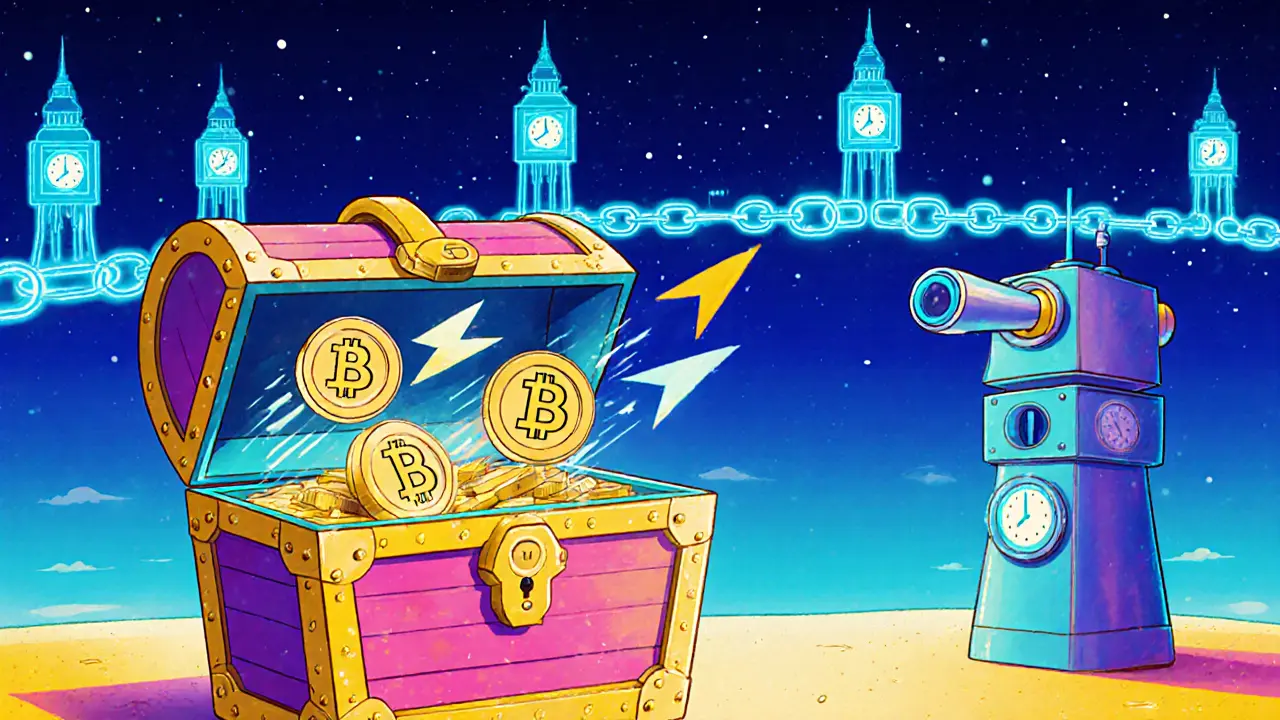
Core Technical Building Blocks
Three mechanisms keep the system honest:
- Hashed Timelock Contract (HTLC) a contract that combines a hashlock and a timelock to enable conditional payments across multiple hops. HTLCs let a payment travel through a chain of channels without trusting intermediaries.
- watchtower an external service that monitors the blockchain for outdated channel closures and alerts the rightful owner. If a malicious party tries to close with a stale state, the watchtower can submit the newer state within the dispute window.
- Timelocks ranging from a few hours to several days give participants (typically 24hours to 7days) a window to contest a fraudulent close.
Why Use State Channels? Performance and Cost Benefits
Benchmarks show a single well‑managed channel can process 1,000-5,000transactions per second, with settlement times measured in milliseconds. Because only two on‑chain transactions are needed per channel life, fees drop dramatically. The Lightning Network reports average fees of 1-5satoshis (≈$0.0003‑$0.0015), a far cry from Bitcoin on‑chain fees that can exceed $50 during congestion.
Limitations You Should Know
Despite the speed, state channels have real friction points:
- Liquidity lock‑up: Funds stay frozen for the whole channel lifespan. Studies suggest that achieving 90% connectivity in a 10,000‑node network requires each node to keep ~150 channels with at least 0.05BTC each.
- Online presence: Participants must monitor the dispute window, or rely on a watchtower, to avoid losing funds.
- Channel management overhead: Rebalancing, liquidity fragmentation, and griefing attacks add operational complexity.
- Privacy vs. verifiability: Off‑chain transactions are private, which is great for confidentiality but limits public auditability.
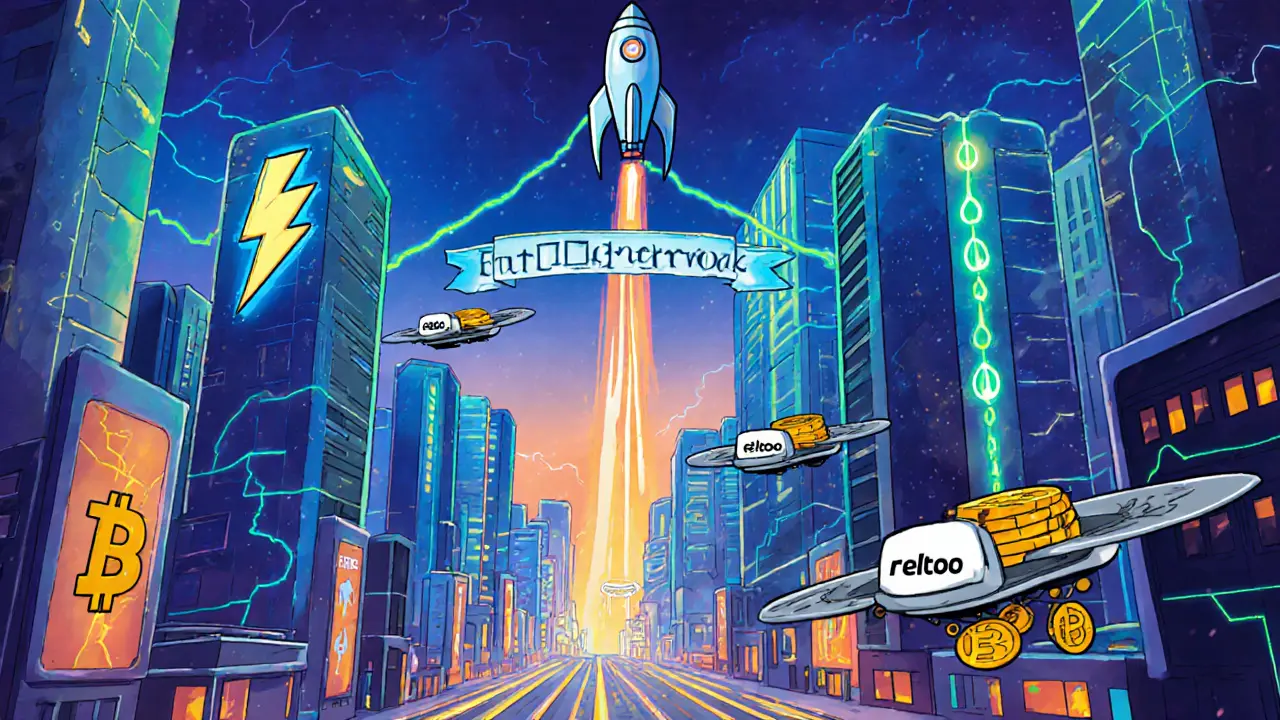
How Do State Channels Stack Up Against Other Layer‑2 Solutions?
| Feature | State Channels | Rollups (Optimistic/ZK) | Sidechains |
|---|---|---|---|
| On‑chain footprint | 2 tx per channel (open/close) | Continuous batch proofs | Regular block submissions |
| Finality speed | Sub‑second (off‑chain) | Seconds to minutes (on‑chain proof verification) | Minutes |
| Security model | Directly inherits main chain security | Relies on fraud proofs or validity proofs | Depends on its own consensus |
| Public verifiability | Private (only participants see intermediate states) | Fully public | Public |
| Ideal use case | High‑frequency, low‑value payments between known parties | General dApp scaling, token transfers | Asset bridges, cross‑chain experiments |
Real‑World Implementations
The two most visible networks illustrate how theory meets practice.
Lightning Network Bitcoin’s payment‑channel network that enables instant, low‑fee transactions across a graph of channels launched its mainnet in March2018. By Q22023 it processed about $15.7million daily, with over 15,800 public nodes and 82,300 channels holding roughly 5,100BTC (≈$154M).
Raiden Network Ethereum’s analogue to Lightning, built for ERC‑20 token transfers via off‑chain payment channels entered testnet in late2017. Though adoption is slower, it demonstrates that the same channel principles apply beyond Bitcoin.
Both networks have added features like trampoline routing and eltoo, reducing reliance on watchtowers and improving liquidity routing.
Future Outlook and Emerging Trends
Upcoming upgrades aim to solve lingering pain points. The Lightning Network’s eltoo proposal replaces the old penalty‑based system with versioned states, effectively removing the need for external watchtowers. Taproot activation in 2021 cut channel‑opening transaction sizes by up to 30%, freeing more capacity.
Beyond payments, researchers are building generalized state channels that can execute complex smart contracts off‑chain. Delphi Digital predicts production‑ready generalized channels by 2025, but Ethereum’s rollup‑centric roadmap may limit community resources.
Industry analysts forecast a 35% CAGR for channel adoption through 2025, especially in B2B payment corridors, telecom micropayments, and gaming micro‑transactions. However, consumer‑facing adoption remains modest due to UI complexity and liquidity management challenges.
Frequently Asked Questions
How many on‑chain transactions does a state channel require?
Only two: one to lock funds (channel opening) and one to settle the final balance (channel closing). All intermediate transfers stay off‑chain.
Can I use a payment channel with a stranger?
Direct channels work best between parties you know and can keep a channel funded. For payments to unknown recipients, you rely on routing through existing channels, which may require liquidity on the path.
What happens if I go offline and a rival tries to close the channel?
The channel can be closed with an outdated state, but you (or a watchtower you hired) have a dispute window-usually 24hours to a week-to broadcast the latest signed state and reclaim your funds.
Are state channels compatible with all blockchains?
They work on any chain that supports programmable contracts and multi‑signature scripts. Bitcoin and Ethereum have mature implementations; newer chains are still experimenting.
How do fees on Lightning compare to traditional Bitcoin fees?
Lightning fees are usually 1‑5satoshis per payment, translating to under a cent for most transactions. On‑chain Bitcoin fees can spike to tens of dollars during congestion.
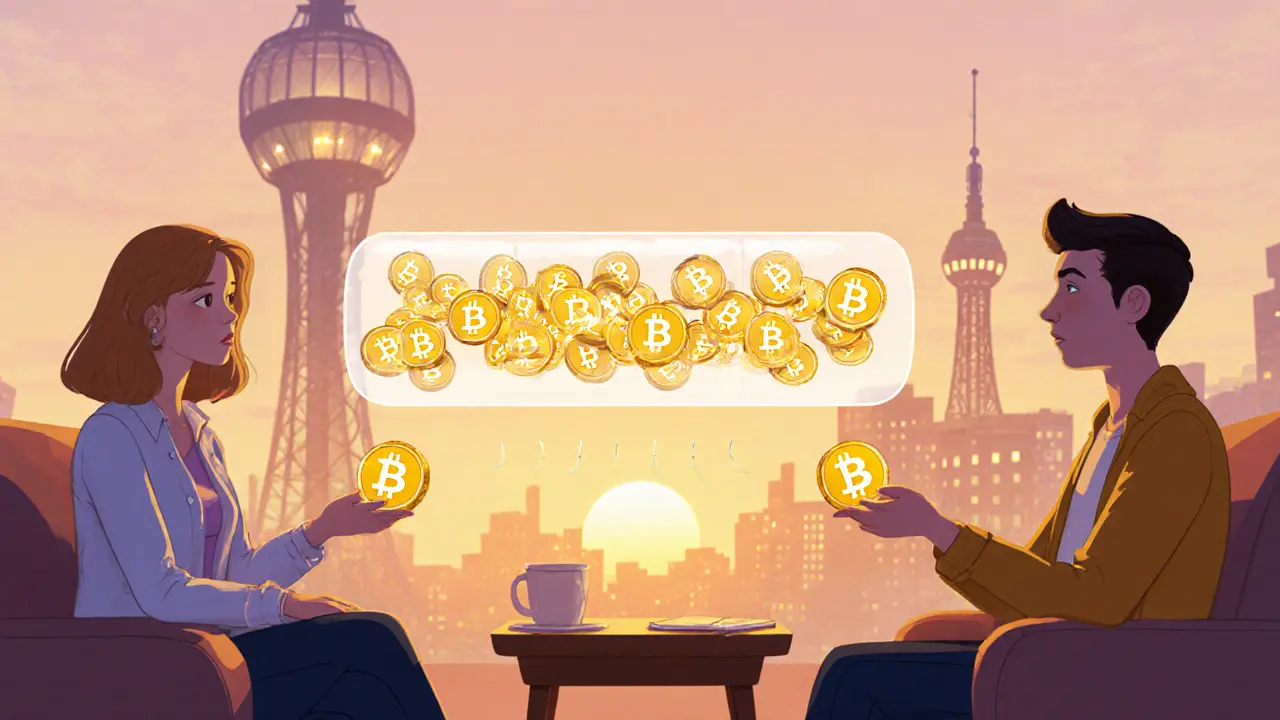
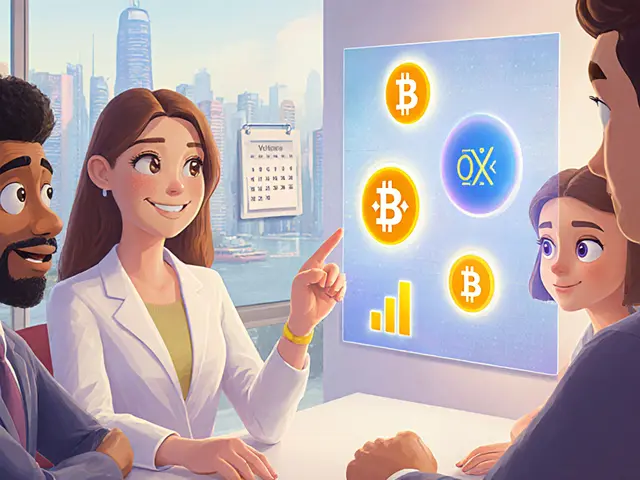
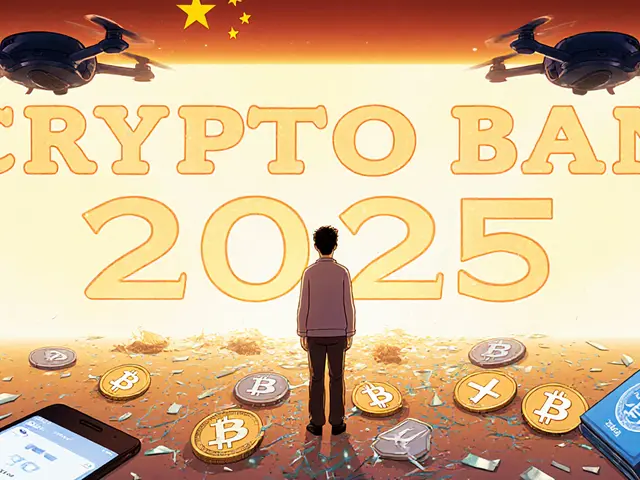
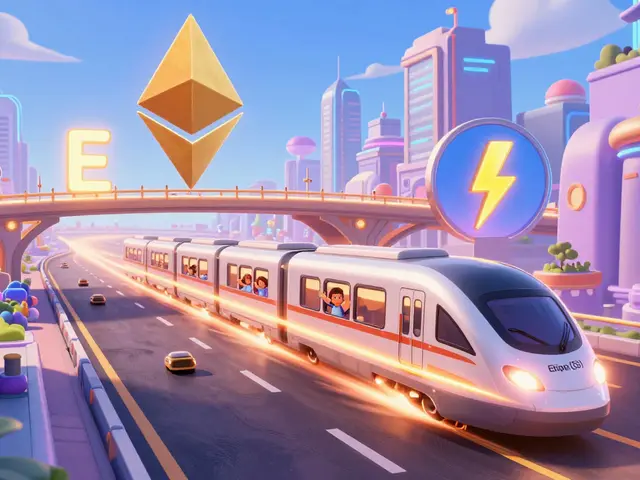
20 Comments
Jason Clark
State channels are essentially off‑chain gossip with on‑chain muscle, nothing more.
Jim Greene
The Lightning Network really shows how slick off‑chain scaling can be 😊.
You can zip a payment across the world in a flash, and the fees are practically nonexistent.
It’s the kind of tech that makes you wonder why we ever settled for slow, pricey on‑chain transactions.
Keep the optimism coming!
Della Amalya
When you peer into the labyrinth of blockchain scalability, state channels emerge as a dazzling beacon of efficiency.
They whisper promises of near‑instant settlement while shielding the underlying ledger from a flood of minutiae.
Imagine two parties locked in a digital handshake, each transaction a fleeting ghost that never touches the public chain.
Only the opening and closing ceremonies demand the full weight of consensus, sparing the network from relentless churn.
This architectural elegance translates to thousands of transactions per second, a realm once thought unattainable for on‑chain activity.
Moreover, the economic incentive is striking: fees collapse to fractions of a cent, making micropayments viable for the first time.
Yet the technology is not without its shadows, for locked liquidity can become a silent hostage.
Participants must remain vigilant, monitoring dispute windows lest a malicious actor snatch away their funds.
Watchtowers step onto the stage as guardians, ready to intervene when the chorus of signatures falters.
The Lightning Network’s evolution, from basic HTLCs to sophisticated trampoline routing, showcases human ingenuity.
Meanwhile, Ethereum’s Raiden Network mirrors this progress, extending the concept to tokenized assets.
Future upgrades like eltoo promise to dissolve the need for external watchtowers, simplifying the user experience.
Generalized state channels aim to push beyond payments, enabling complex smart‑contract interactions off‑chain.
If these ambitions bear fruit, entire decentralized applications could flourish without ever touching the base layer.
In the grand tapestry of scaling solutions, state channels occupy a niche that balances speed, cost, and privacy, reminding us that sometimes the most powerful moves happen away from the public eye.
Teagan Beck
I get the hype, but remember you’ve got to keep your node online or the channel can be hijacked. It’s a trade‑off you have to weigh.
Kim Evans
State channels give you privacy and speed, but don’t forget the liquidity lock‑up can bite you later :)
Steve Cabe
American developers have been leading the charge on Lightning, proving that US tech can outpace any rival in real‑world adoption.
shirley morales
State channels are overrated they lack transparency and the complexity deters average users
Mandy Hawks
In the flux of digital transactions, the off‑chain realm reflects the impermanence of value itself, hinting at deeper metaphysical currents.
Millsaps Crista
Push the boundaries, open more channels, and watch your throughput skyrocket! No more excuses.
Matthew Homewood
One might consider the similarity between off‑chain state updates and the subtle adjustments we make in daily conversations.
Bruce Safford
Yo the deep state dont want you using off chain tech they want all tx on the main chain so they can track u lol
Kevin Duffy
Totally agree, the fees are almost zero 😎.
It’s like sending a text but with crypto.
Mitch Graci
Wow!!! You really think state channels are overrated??? Well, maybe if you enjoy paying massive fees and waiting hours for confirmations!!! 😂
Jazmin Duthie
Sure, because nothing says progress like ignoring scalability.
Michael Grima
Channels are fast and cheap a real game‑changer
Michael Bagryantsev
Your overview captures the essence beautifully, and it’s great to see such depth in a community post.
Maria Rita
Absolutely! The drama of fast payments really energizes the ecosystem 😊
Jordann Vierii
Indeed, the cultural shift toward micro‑transactions mirrors broader societal trends toward instant gratification.
Lesley DeBow
I love emojis 😎 but also try to avoid them sometimes 😅
DeAnna Greenhaw
While the oscillation between emoticon utilization and abstention may appear capricious, it in fact underscores the nuanced semiotics of contemporary digital discourse, wherein each glyph bears the weight of expressive intent.